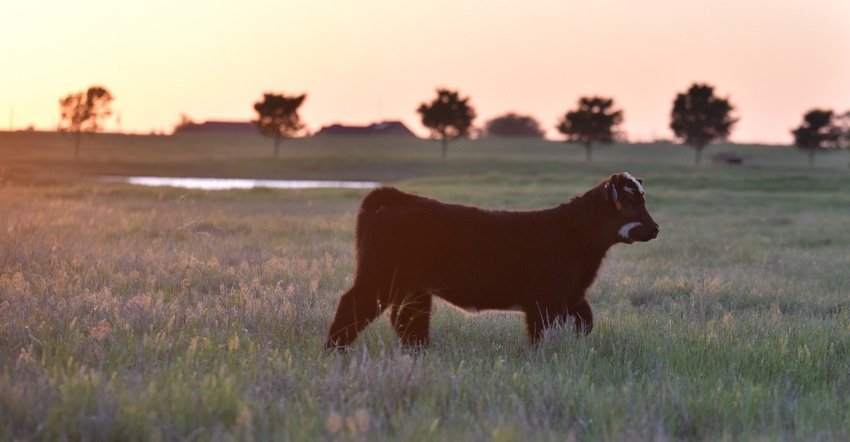It takes a strong foundation to control BVD
Support and protect calves from disease through their entire lives with an organized plan
July 1, 2022

Sponsored Content
By Dr. Brett Terhaar DVM, Technical Consultant, Elanco Animal Health
Any fortress built to withstand outside elements starts with a strong foundation built to last and support the rest of the structure for as long as it stands. The same can be said for your calf herd. Immunity is not built in a day but involves a process that is built over time. It starts with a solid foundation that supports and protects the calf from disease throughout its entire life.
Two-way Impact
Bovine Viral Diarrhea (BVD) is one of those diseases that can attack an animal’s immune system throughout its lifecycle. In order to control the virus, it’s important to understand how the virus works. The BVD virus can act in one of two ways:
The virus infects an animal and the animal either dies or recovers. If the virus is spread to another host before the animal dies, the virus survives. If not, the virus dies along with the animal.
The virus is passed from infected cows to their unborn calves. This can result in abortion. If these calves live, those infected early in pregnancy (30 to 125 days) can remain infected all of their lives and are considered persistently infected (PI). These animals will continue to shed the virus to other animals in the herd.
Producers raising their own replacements in a relatively closed-herd environment have greater control over building an immunity foundation. In this instance producers can expose future replacements to the BVD virus through vaccination to start to build immunity. Producers should use a modified live virus (MLV) vaccine that includes BVD Type 1 and 2 viruses. This process generates an antibody response and a cell-mediated response that train the immune system to see the virus. Antibodies are made through the B cells. In addition, as the virus is replicating in the calf the T cells recognize what an infected cell looks like for future reference.
For reference, in the immune system B cells produce antibodies that bind to invading pathogens. In addition, T cells destroy the body’s own cells that have been taken over by viruses. The body also has memory cells that are long-lived immune cells capable of recognizing foreign invaders to which they were exposed years before. Through this process of vaccinating calves early on, we have activated all aspects of the immune system and started the development of a strong foundation.
Add To The Foundation
As calves grow it’s important to continue adding bricks to the foundation. Calves ideally should have at least two doses of an MLV vaccine by nine months of age. Once heifers are pregnant, switch to an inactivated vaccine. Whether you give an annual vaccine to booster immunity depends on the system you are in. However, if you are bringing animals into the herd, it’s probably a good idea to booster at least once per year either prior to breeding or pregnancy check.
Annual vaccinations can increase the amount of circulating antibodies in the cow. If that vaccine is administered at pregnancy check, which would be in the fall for spring-calving herds, the cow has enough time to be at peak antibody level before she starts making colostrum. That would increase the level of antibodies transferred to the calf and help establish an immunity foundation right away once the calf is born and consumes the colostrum.
Can’t Vaccinate A Problem Away
To identify how much protection is needed for your herd, it’s important to understand your level of exposure. If you have persistently infected cattle in the herd, your BVD problem isn’t going to go away just through vaccination. You will have to develop a biosecurity program and stick with it. There are literally hundreds of BVD strains in the U.S. and no vaccine program is going to give 100% protection in every situation. That means you won’t be able to solve your BVD problem through vaccination alone. You’ll need to test animals.
If you suspect a BVD problem is happening in your herd, it’s important to test and remove persistently infected animals. If you are purchasing bulls or replacement heifers, be sure to test those animals once they get to your farm or ranch. Persistently infected animals can come from any herd. Don’t take for granted that the seller has a good vaccination program that you can build upon. Once animals arrive, take an ear notch skin sample and send it out for diagnosis. Keep the animals separate from the rest of your herd until results come back.
If you are bringing pregnant heifers into the herd, keep them separate from the main herd until they calve and then sample the resulting calves. If the calves are negative, their dam will be too. If the calf is positive, test the dam to determine her status. If both are positive, then each will have to be removed.
Because each system is unique, it’s important to develop a BVD control program with the counsel of your herd health veterinarian. The timing of vaccinations and the choice of MLV vaccines versus inactivated vaccines is one that will be unique to your own situation. Regardless of the situation, however, it’s important to establish a strong foundation of immunity that can carry a calf throughout its lifetime.
Elanco and the diagonal bar logo are trademarks of Elanco or its affiliates.
© 2022 Elanco. PM-US-22-0623
About the Author(s)
You May Also Like


.png?width=300&auto=webp&quality=80&disable=upscale)
